When Godox sent me the Lux Elf for review, the flash had not yet been officially launched. They asked me not to post photos or talk about it publicly, so in my Instagram story, I just said I was trying out a “cute new flash” – details to be revealed later.
“Cute?” my friend said in reply to my story. “That’s not an adjective you often hear about a flash.”
Indeed, cuteness is one of the characteristics that differentiates the Godox Lux Elf from the vast array of flashes available to us today. It’s cheap too – at £47, the Elf is currently the cheapest flash in Godox’s Lux (retro flash) line. As you would expect, it is also the least powerful, and has the fewest features. But does it have enough features and power for your needs? That’s the question I’ll try to answer through this review.
Gear preferences are obviously subjective, but I’ll share my impressions of this cute little flash, as well as some sample photos taken over the last couple of months field-testing the Godox Lux Elf. And if you’re in the market for a cheap, compact and fun flash, this review will hopefully help you understand whether the Lux Elf is right for you.
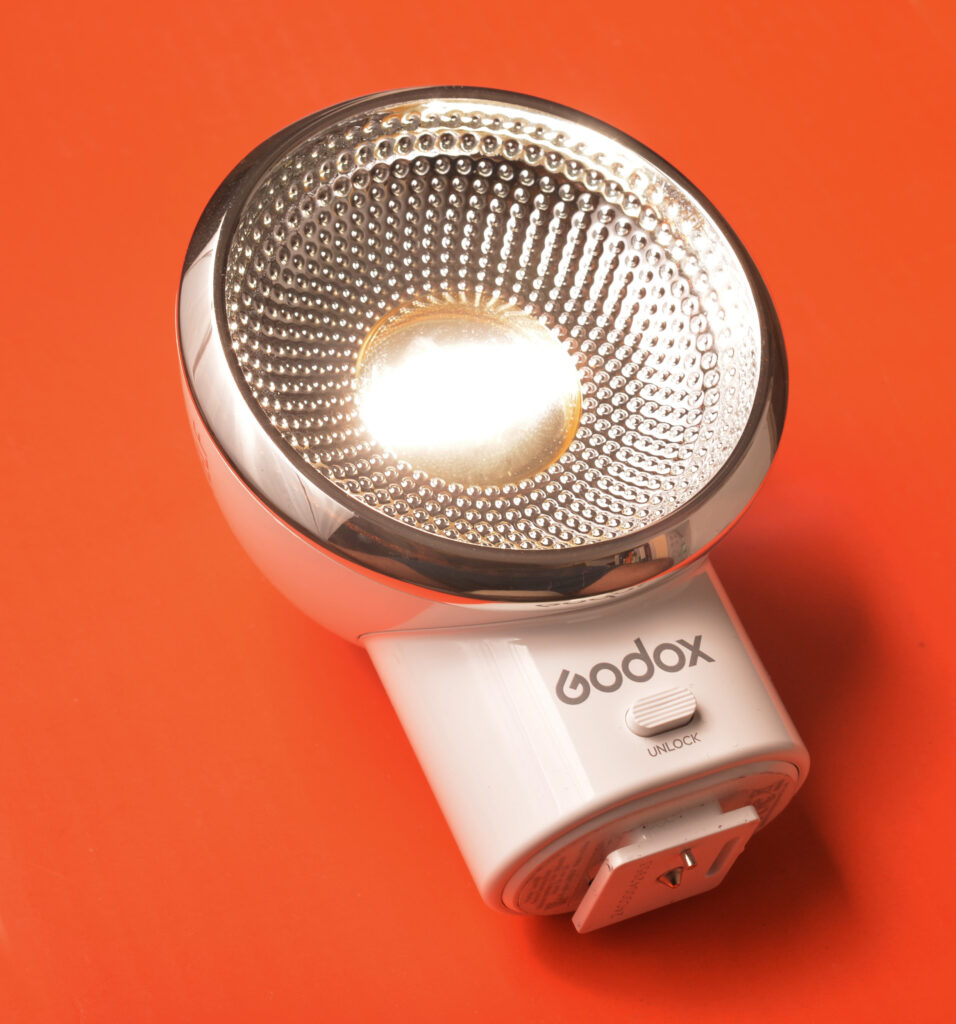
The Godox Lux Elf, launched in April this year, is one of the most recent additions to Godox’s Lux series of retro flashes. The line currently consists of the Lux Senior and Junior (reviewed here), the Lux Cadet, and the latest Lux Master (which I hope to review in the next month or so).
The Lux flashes are compatible with pretty much any camera – film or digital – which has a hotshoe. They also have sync ports for wired connections, and optical receiver function for off-camera use (where the flash fires synchronously when it “sees” another flash).
Review notes
Godox kindly sent us the Elf for review, but I was not paid for this review, nor do we have affiliate links. I try to be honest and objective in my reviews, but I always encourage readers to think independently, study the sample photos and make up their own minds. Feel free to ask questions in the comments section too, if there’s something I’ve not covered or which you feel unsure about.
The sample photos in this review were shot with a Fuji X-E4 camera and various lenses (if you want more details about gear, just ask me in comments).
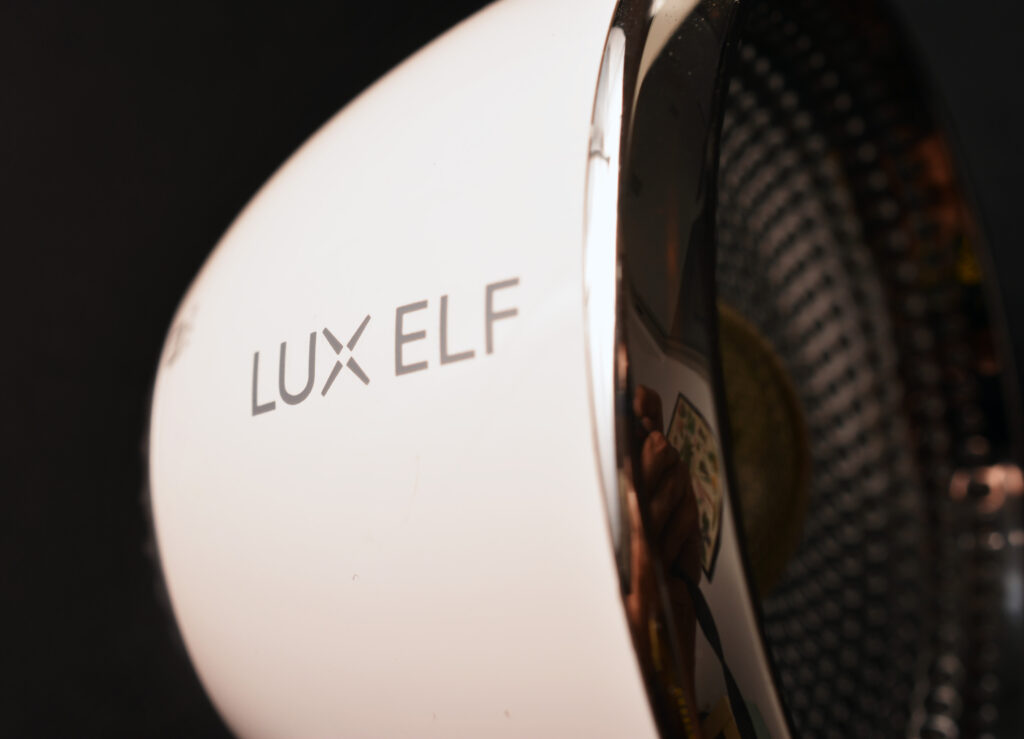
What’s in the box
The Cadet comes with a charging cable (USB-A to USB-C) and a cloth bag.

Look and feel
If you like retro design, the Godox Lux series are possibly the coolest-looking flashes currently on the market. Now you might say that a flash is just a tool, and form and aesthetics aren’t important. But form and aesthetics are evidently a selling-point for the Lux series, so I thought it’s worth briefly talking about.
The Godox Lux Elf is currently available only in white – though the Lux Senior has been rolled out in other colours, so I wouldn’t rule that out for the Elf.
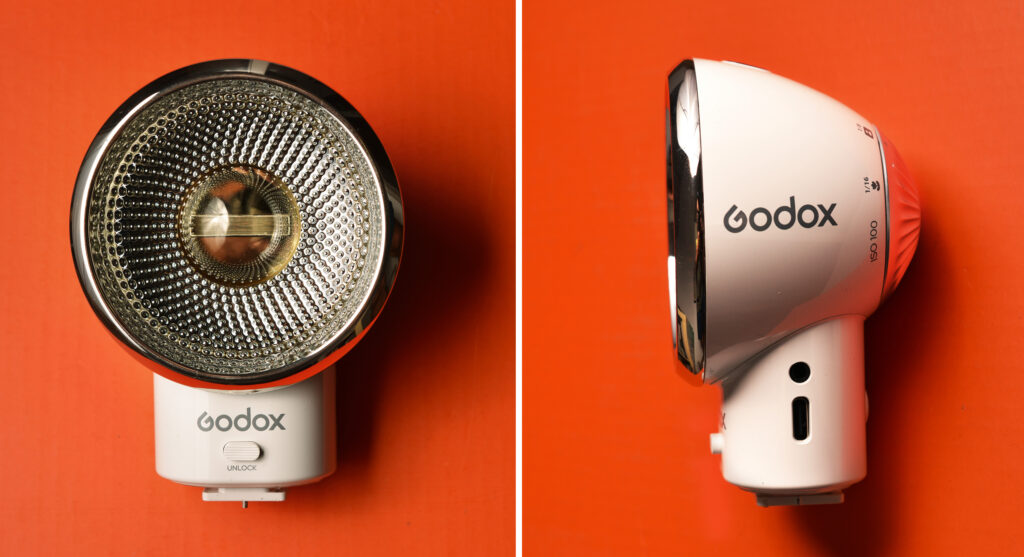
The Lux Elf has a horizontal flash tube encased in a transparent bubble, and surrounded by a circular silver reflector. The reflector dish is smaller than the fan-style reflector on the Lux Cadet, but I’m sure it still spreads and softens the light a bit more compared to using just a bare bulb.
The body is plastic, including the flash shoe, which in other Lux models is made of metal. The plastic is glossy, and to me this feels a bit more cheap and cheerful, compared to the other Lux models which have matte, chrome or faux-leather finish. I personally prefer the latter, but the Elf leans into the cheap and cheerful aesthetic which some people might prefer, especially since it’s clearly designed (and priced) as a fun flash, rather than a serious professional tool.
On the Lux Elf’s product page, many of the photos show it mounted on a white Canon EOS M camera. Indeed, based purely on looks, white plastic-body cameras are probably the best match for the Elf, though it also pairs well with other retro-styled cameras like my Fuji X-E4.
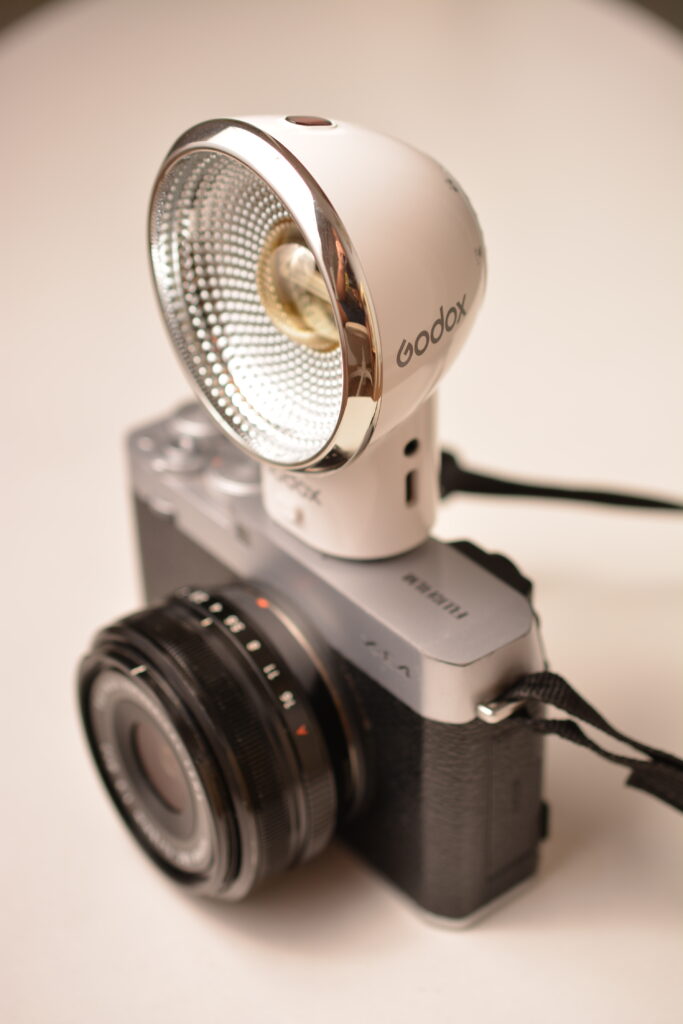
Some of the other Lux series flashes, especially the ones with a fan-like reflector, look great on my Minolta Autocord. But the Elf, in my opinion, looks a bit too modern for a TLR.
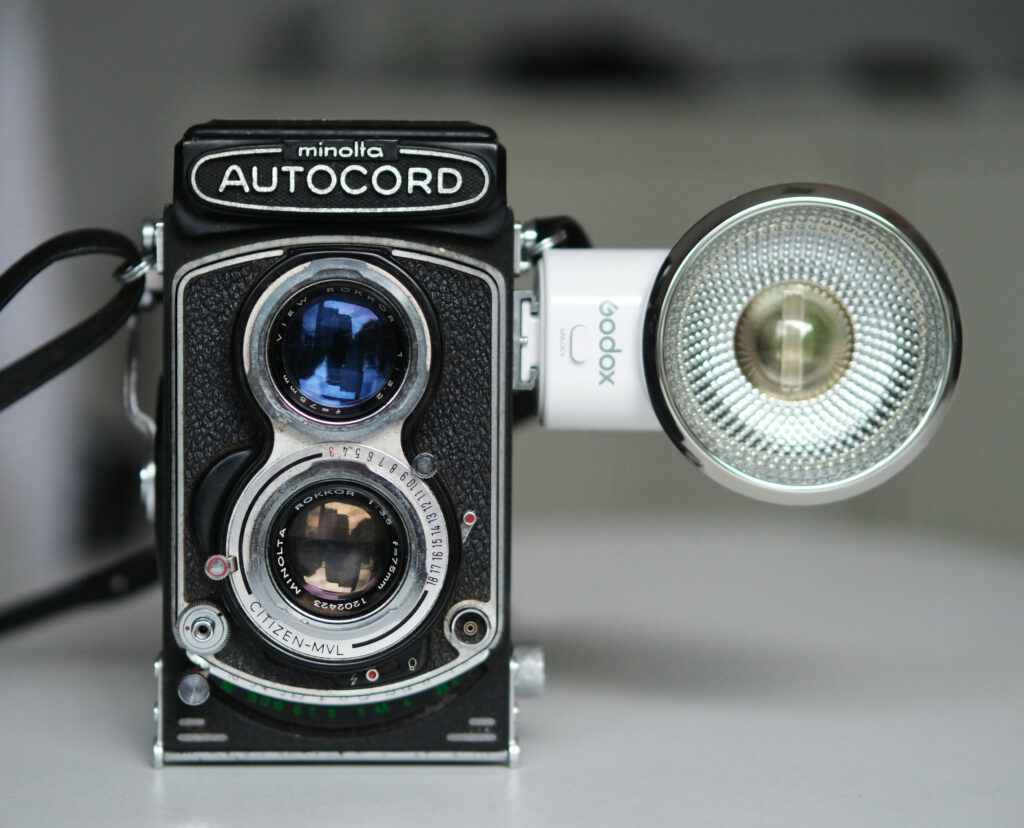
Specs
The following specs are taken from the Godox website, except the price, which is from Amazon UK at the time of writing.
| Guide number (full power) | 6 (ISO 100, metres) |
| Flash power | 5 levels (1/1 – 1/16) |
| Colour temperature | 6000K ± 200K |
| Focal length | 28mm (fixed) |
| Battery | Lithium, 7.4V⎓350mAh |
| Recycle time (full power) | ≈3.6 sec |
| No. of flashes (full power) | ≈400 times |
| Sync | Hotshoe, PC sync cable |
| Optical control | S1/S2 |
| Dimensions | 2.76”×3.82”×2.09” |
| Weight | 96g |
| Price | £47 |
Controls and features
There is a vast range of flashes from Godox and other manufacturers with all sorts of advanced features such as radio control, TTL and high-speed sync. The Lux series, on the other hand, is evidently less about features, more about aesthetics and fun. The Elf, as I mentioned, is the cheapest flash in the series. Not surprisingly, it also has the fewest features.
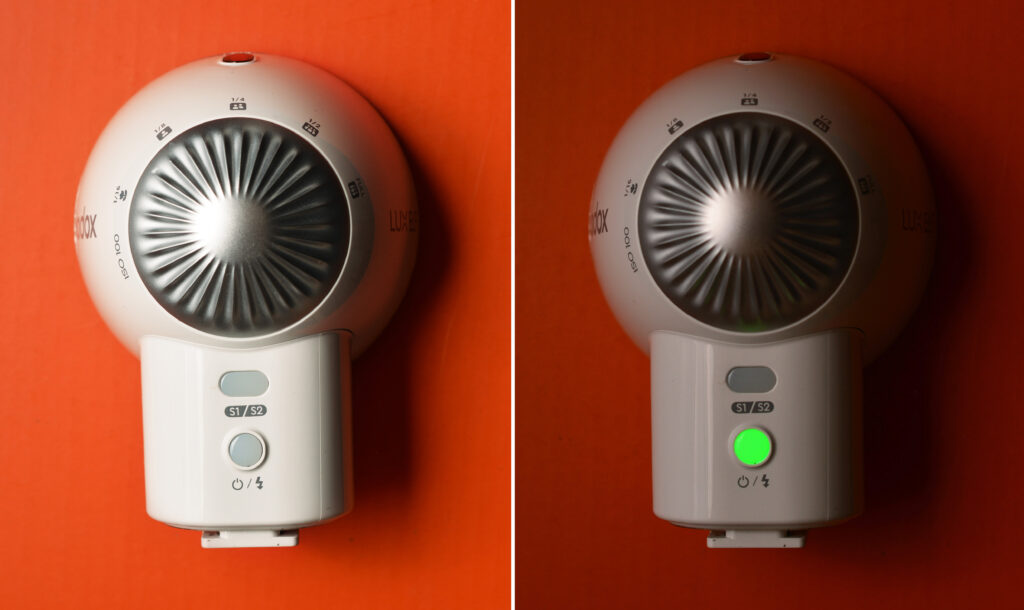
The Lux Elf’s controls are all on the back. The On/Off switch also doubles as the “test fire” button. It glows green when the flash is on and ready to fire, and red when it’s recycling.
The S1/S2 button cycles through three modes: off, S1 (red) and S2 (blue). If you’re not familiar with flash terminology, S1 and S2 are the two optical control modes, where the Elf can be used as an off-camera flash, firing synchronously when it “sees” another flash. In S1 mode, it fires instantly. S2 mode is for when the main flash has a pre-flash for TTL metering; the Lux will then ignore the pre-flash and only fire in response to the actual flash.
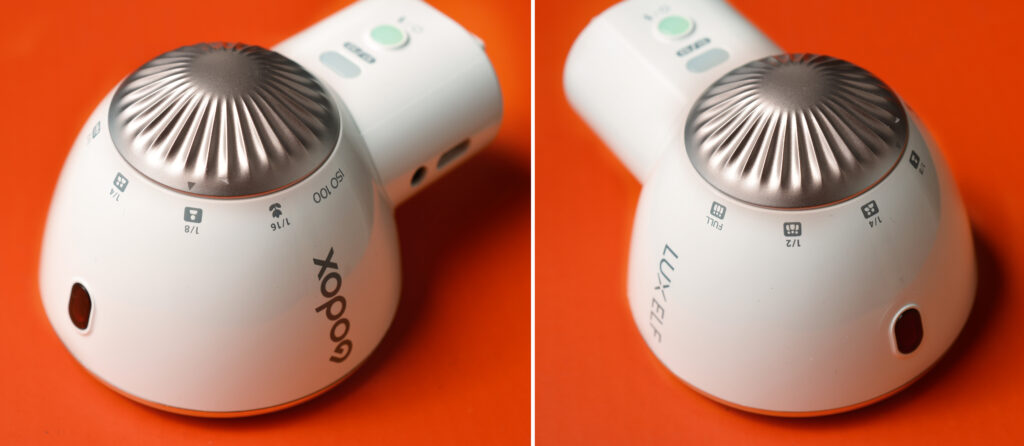
Besides these two buttons, the Lux also has a grey power dial which goes from 1/16 to full power – a total of five power levels in one-stop increments. The power dial also has little icons, e.g. a flower for 1/16, and a portrait for 1/8. Next to the dial, it says “ISO 100”, but oddly enough it doesn’t specify the aperture, so unless I’m missing something, the indication is not very meaningful.
With a digital camera, it’s generally easy to take a photo, check how it turned out, then adjust the power/exposure settings if necessary and take another. With film, we might need to rely more on the power indications.
In my tests, I found that the portrait setting (1/8 power) works for a head-and-shoulders portrait at f/4 – see the photo below, which is straight out of camera except for slight horizontal cropping. All the light in the photo comes from the flash. The ambient light was dim, so without flash, the photo would have been almost entirely dark.
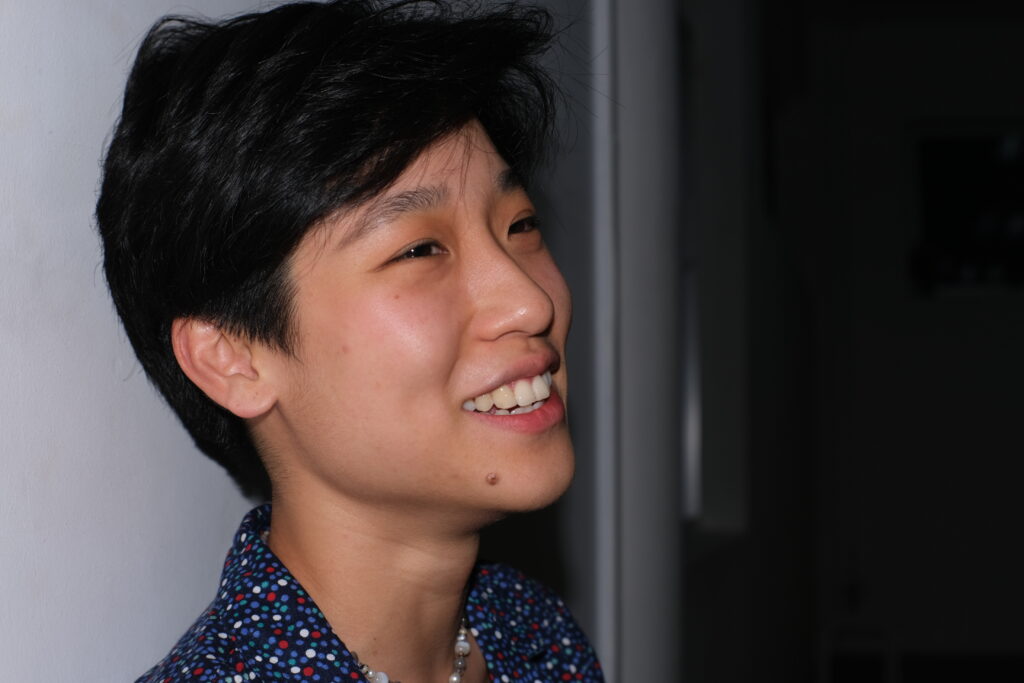
The lens is also an important part of the equation. I took this photo with a 35mm lens on an APS-C sensor camera (equivalent to a 50mm lens on a 35mm or full-frame camera). If I were using a wider lens, I would be closer to the subject, and therefore need a lower power setting (or a lower ISO, or higher f-number). And the converse would be true if I were using a longer lens.
So presumably, for the power indications, the intended camera settings are ISO 100 and f/4 for a 50mm full-frame lens. Equivalent exposure settings would work too, such as ISO 50 and f/5.6 or ISO 400 and f/2.
Of course, if you want to use a different ISO or aperture, you can also pick a different power setting. For example, if you wanted to use ISO 100 and f/2.8 (rather than f/4) for a head-and-shoulders portrait, you could use the power setting for macro (1/16) rather than portrait (1/8).
So yes, some more information or context about the power indications would be helpful, perhaps in the manual. But in general, adjustable power is a very useful feature – another variable (in addition to ISO, aperture and shutter speed) that we can tweak to obtain the desired blend of ambient and flash exposure. The photos below show how changing the power affects the image. All photos were shot at ISO 160, f/11, 1/180 sec (I only changed the flash power).
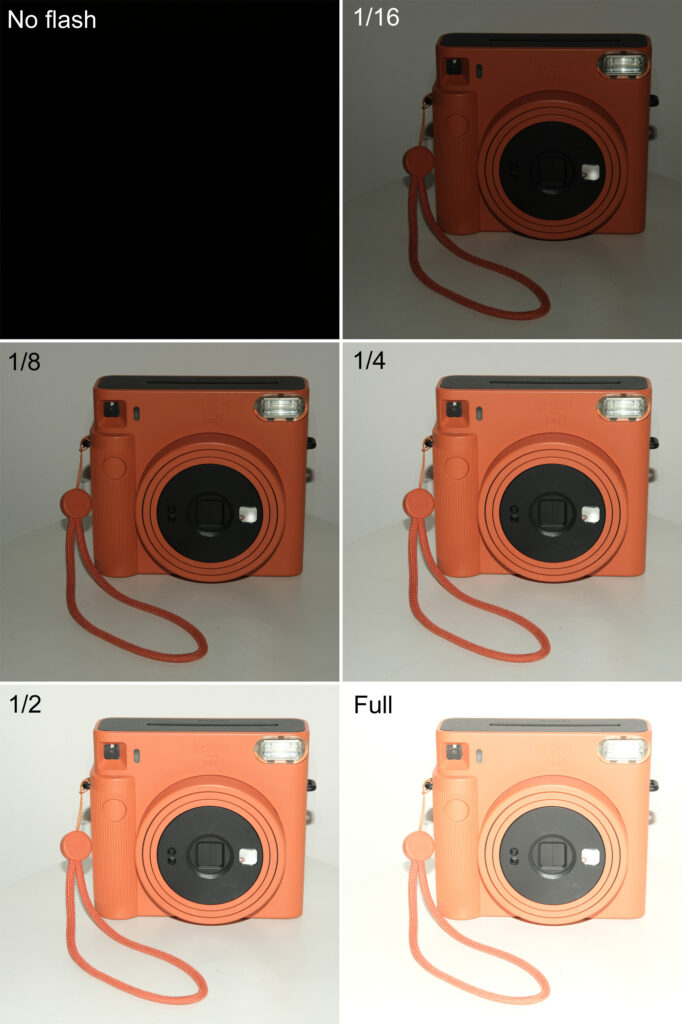
Many photographers like to use rear-curtain sync for long-exposure flash photos. The Elf product page and manual don’t talk about rear-curtain sync specifically, but it works on my digital camera (Fuji X-E4), and I suspect it will work on other cameras too as long as they have a rear-curtain sync setting.
Ergonomics
I’ve used and reviewed all the other Lux series flashes from Godox (except the Lux Master, which I hope to review soon), and I always praised the ergonomics, such as switches and dials that click satisfyingly into place. But I have to say I’m not as impressed with the ergonomics of the Elf.
For one thing, the power button requires a long press. It’s only about 1 second, but I prefer when I can instantly turn a flash on or off. So I would have preferred a dedicated power button on the Elf, like we get on the other Lux flashes. Secondly, the power dial doesn’t feel as nice (more plasticky, and a bit more play) compared to the dials on the other Lux series flashes. Thirdly, the arrow on the power dial is quite small, which makes it hard to see the power setting at a glance.
However, ergonomics – like looks – are more important for some people than for others, and you could argue that at the end of the day, how well a device performs is more important than how well it handles.
Flash sync
The Lux Elf can be fired in three ways, plus a non-standard fourth way.
1. On-camera: The first, most common use is on-camera, with the flash mounted on the hotshoe. This is what I used for most photos in this review, like the one below.
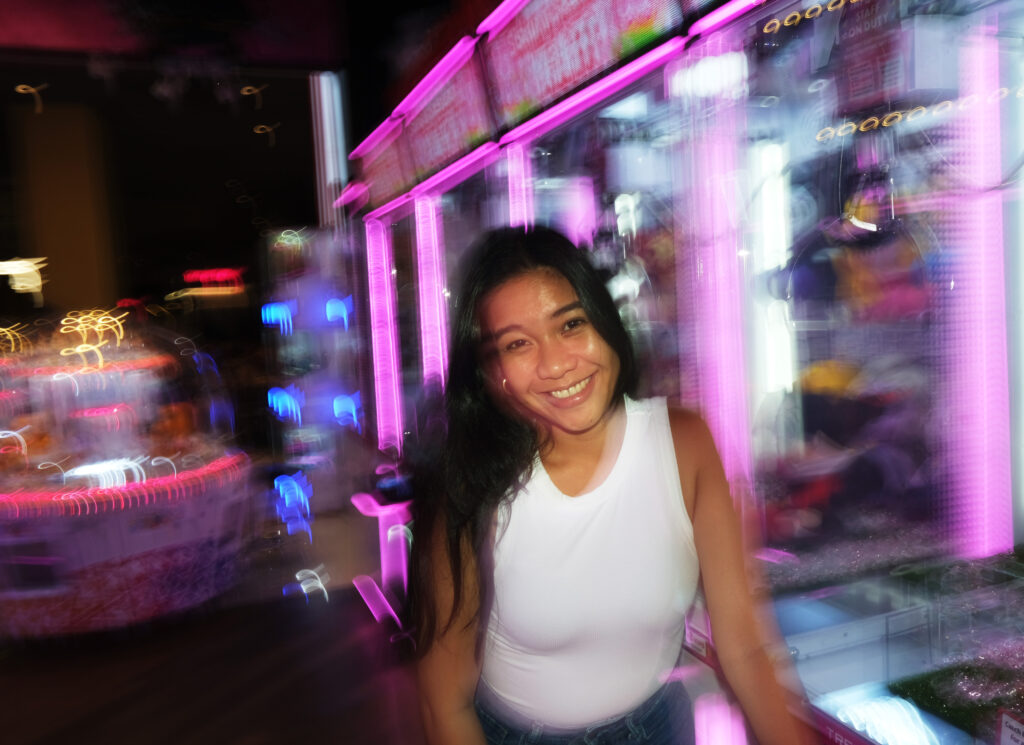
2. Wired: Second, as I mentioned, the Lux Elf has a 2.5mm port for a cable, which allows for wired sync. Having such a port is useful on older film cameras which don’t have a hotshoe. For instance, my Minolta Autocord TLR only has a “coldshoe” – a bracket where you can mount the flash, but there’s no automatic sync. However, the camera does have a PC terminal, so I can use a sync cable to fire the flash. Unlike some of the other Lux series flashes, the Elf doesn’t come with an included sync cable, so you would have to buy your own. Fortunately such cables – especially the most common type which is a PC (Prontor-Compur) connection – are widely available and inexpensive, just a couple of pounds. But make sure you get the right one for your camera.
3. Optical control: The third option is optical control, which is one way to achieve wireless off-camera sync. Essentially, this means that the flash will fire synchronously when it “sees” another flash. The Lux Elf has two optical control modes activated by the push of a button: S1 (red), where it fires instantly when it sees a flash, and S2 (blue), where it ignores the first pre-flash and only fires in response to the second (actual) flash. Optical control is useful if, for example, you want to use your on-camera flash as a fill light, and the Elf as an off-camera key light. Unlike some of the higher end Godox flashes, the Elf is not compatible with wireless radio control.
In the following demo, I used the Lux Elf (camera left) as an off-camera key light, and an on-camera flash (Lux Cadet) as the fill light. The Elf was set to S1 mode, firing when it “saw” the on-camera flash. The photo below shows the setup:
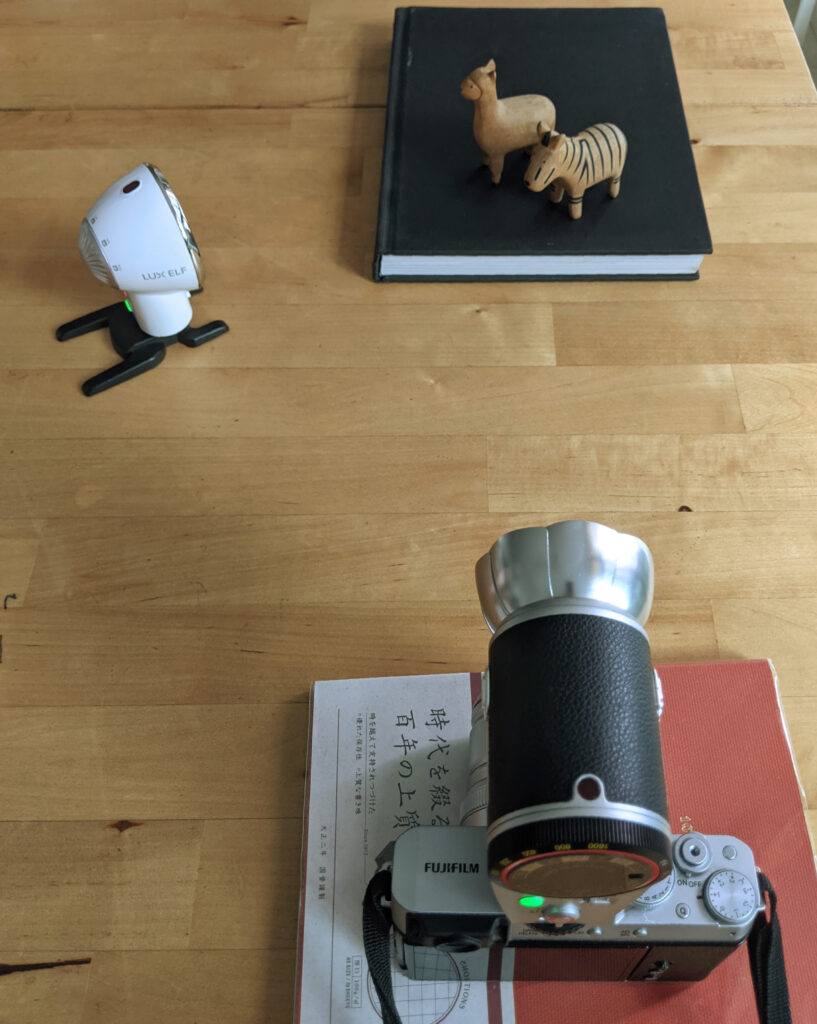
And the photos below show the effect that each flash had:
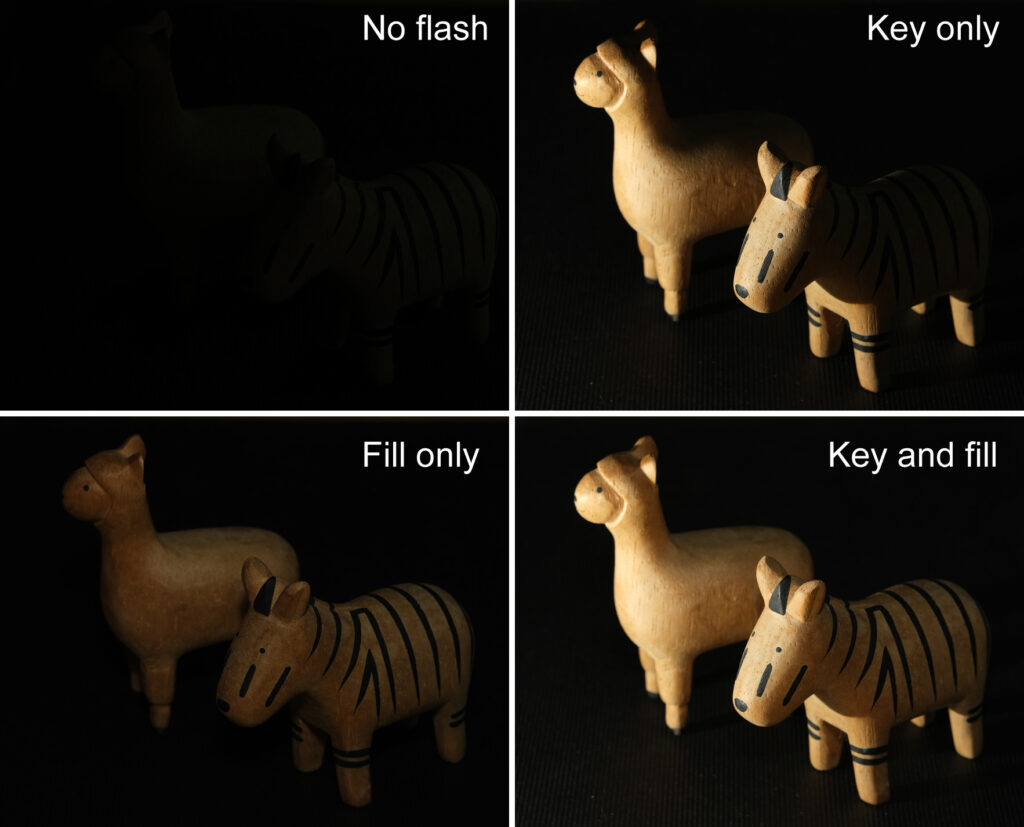
4. “Manual” sync: There’s a fourth way to fire the flash, which is a bit of a hack. If your shutter speed is long enough – let’s say 1/2 sec or more – you can “manually” sync the flash, by which I mean hold it in your other hand and press the Test button, timing it so that the flash fires when the shutter is open.
Power
Unlike the Godox Lux Junior which uses AAA batteries, the Elf runs on a built-in lithium battery. The battery is charged by plugging a USB-C cable (supplied) into the flash unit. This is super convenient. My only gripe is that, since lithium batteries tend to lose their charge-holding capacity over time, I would have preferred the battery to be replaceable, not integrated.
Digital samples
The photo of my friend below was taken in a dimly lit corridor, so with the settings I used (ISO 100, f/4, 1/30), the frame would be virtually black. With flash, it looks relatively natural I think – the quality of light is about as good as you can expect from on-camera, undiffused flash.
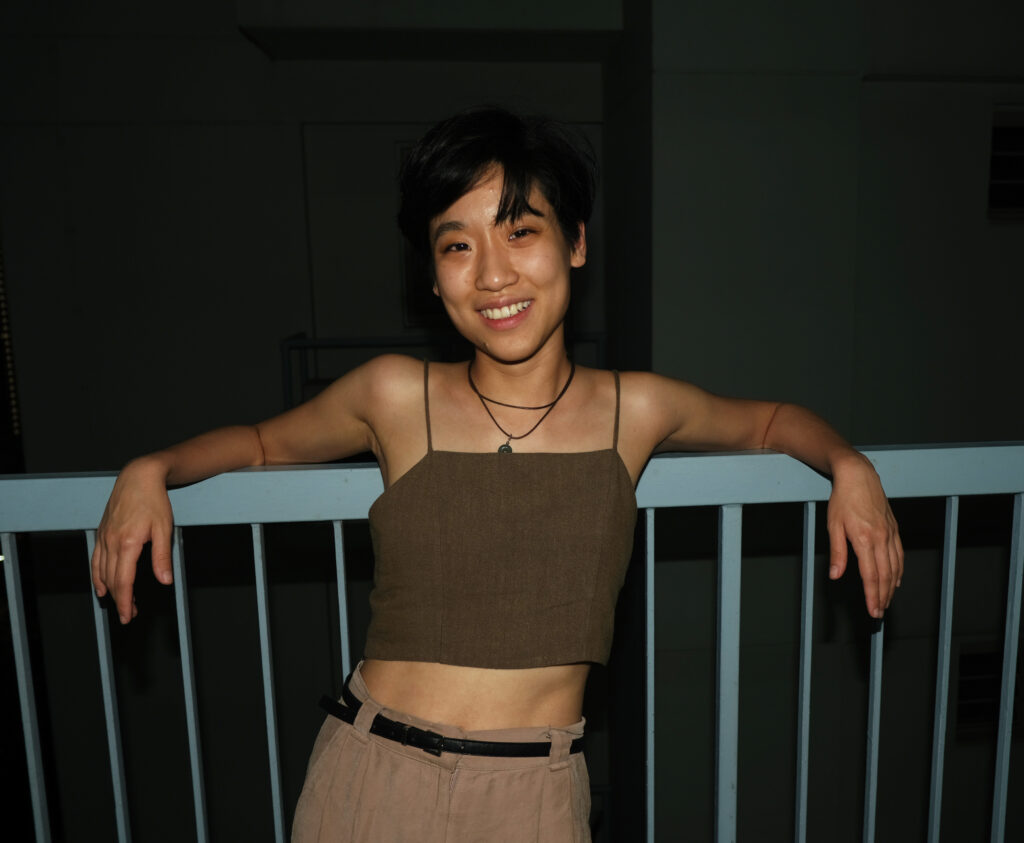
Unlike the previous photo where I “killed the ambient”, the next example uses a blend of ambient and flash. I chose camera settings (ISO 160, f/2.8, 1/30 sec) which gave me the exposure I wanted for the background. Without flash (left), the subject – my friend Katrina – was still way too dark, but with flash, it’s nicely balanced.
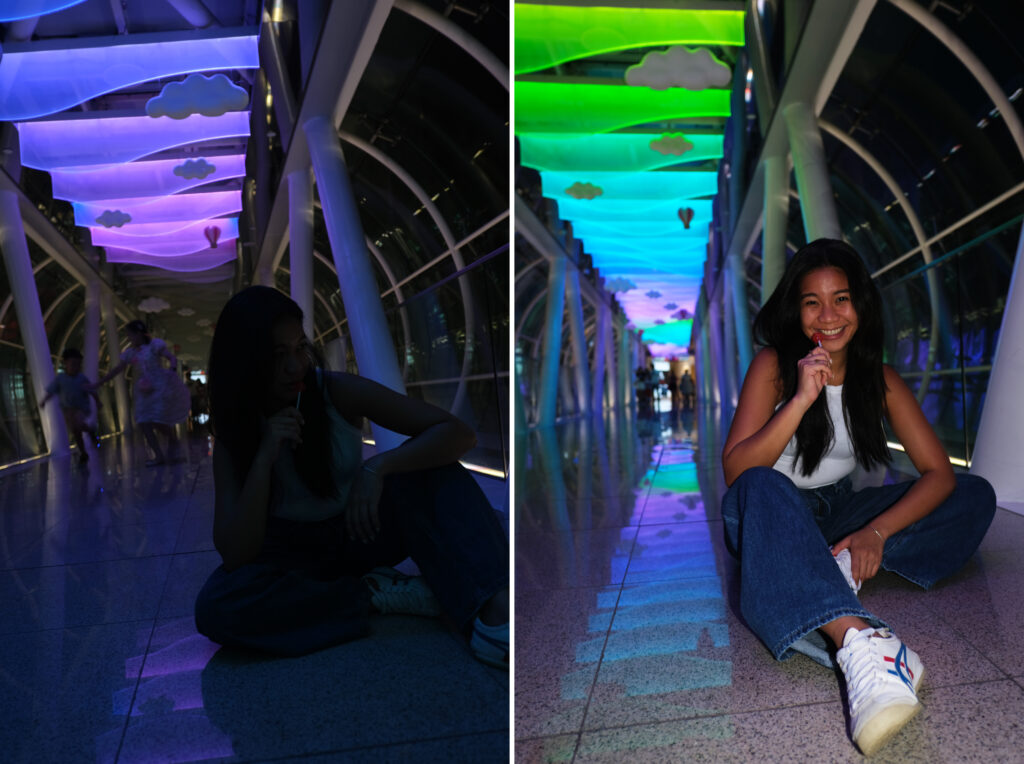
At close quarters and full power, the Elf is strong enough to compete with the sun. The photos of my friend below were shot at ISO 160, f/16, 1/180 sec. She was in the shade, so if I exposed for her face, the background would be completely blown out. With flash, she admittedly looks a bit photoshopped – for a more natural look I’d have to use off-camera flash, ideally with some form of diffusion – but at least we have both foreground and background detail.
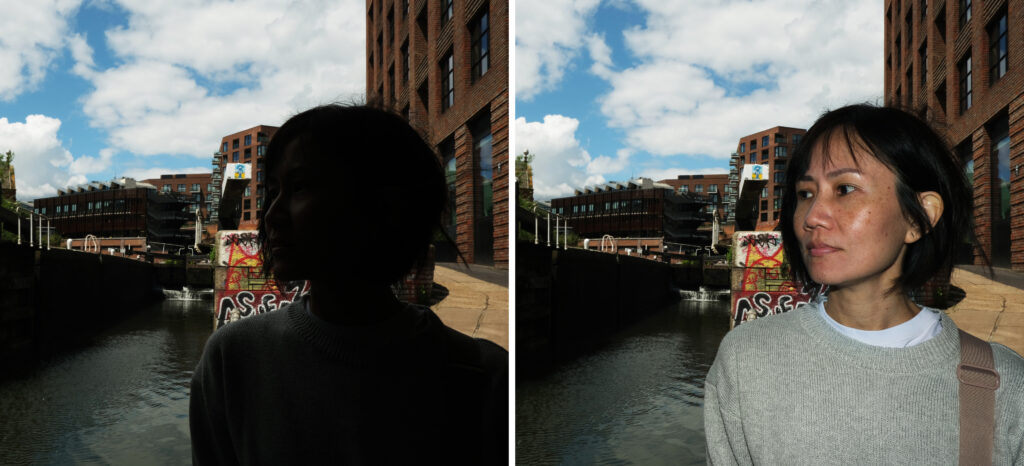
The Lux Elf is really small and light, so it’s easy to carry on nature walks where I might need a little extra pop of fill light. It came in handy for this photo of a female Wagler’s pit viper, hiding in some bushes (the image on the left was with the same settings, but without flash).
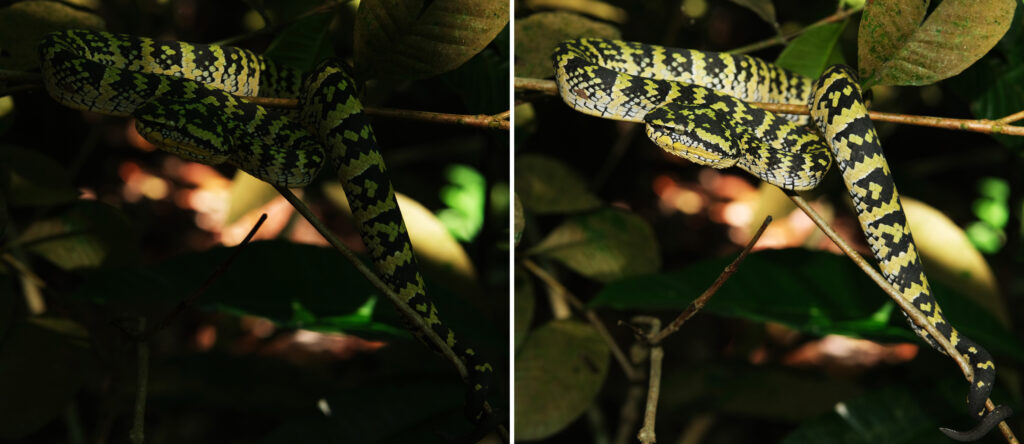
The same goes for this Hübner’s wasp moth – flash (right) brought out the colours a bit more, but in a way that still looks pretty natural.

The two previous examples were more like fill flash, where I retained much of the ambient background light. But at a higher power setting and at close quarters, the Lux Elf can also subdue the ambient light. The photo of the orchid (below left) was shot without flash, at ISO 160, f/4, 1/250 sec. For the photo on the right, I dropped the ISO to 80, stopped down to f/16 and used the fastest sync speed on my camera (1/180 sec) to “kill the ambient” as much as possible. Without flash, the flower would be completely dark, but with flash, it stands out rather dramatically.
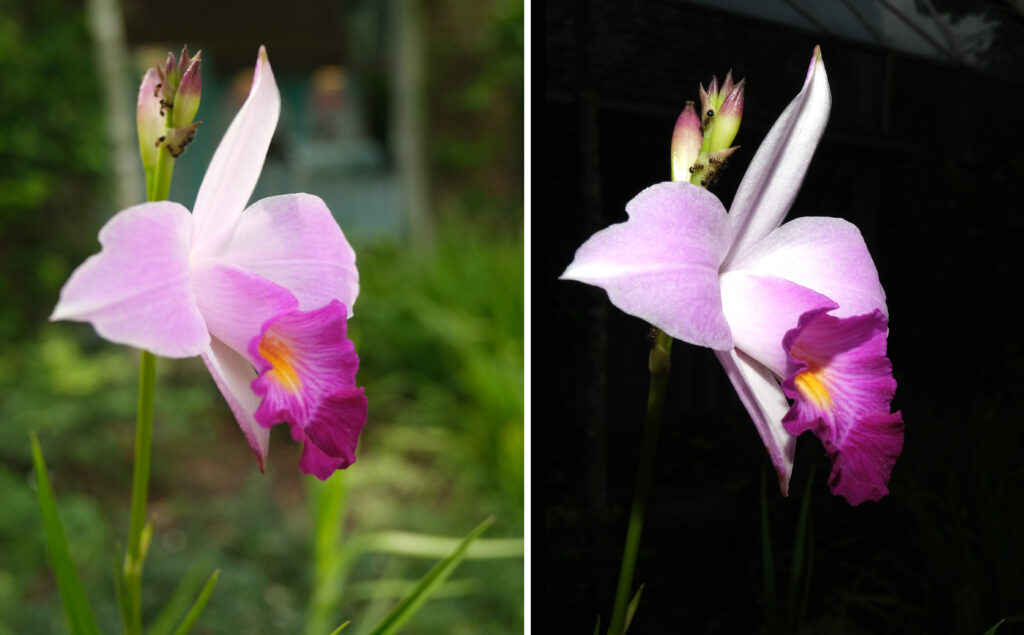
Final thoughts
At a time when the market is awash with a mind-boggling array of lighting solutions, the Godox Lux series is rather unique – retro-styled flashes, which nevertheless boast modern features like adjustable flash power and optical control. They accessorise really well with film cameras or retro-styled digital cameras, but they pack enough features and flash power to be much more than just accessories.
The Lux Elf is small and light enough that you can take it on a casual nature walk or a night out with friends, have it mounted on your hotshoe for long periods, but still not mind the added bulk. And as I said at the start of the review, it looks cute, which tends to put people at their ease – much more so than a “serious” speedlight or strobe.
Conventional speedlights (e.g. the Godox TT685), have a lot of other features such as tilt, swivel, zoom, TTL, radio receiver and high-speed sync. The Lux series flashes (other than the Lux Master, which I will review soon) are generally a lot simpler, with a focus on user-friendliness and retro aesthetics. Within the Lux series, the Elf is the cheapest (£47 on Amazon UK), but also the simplest and least powerful.
When it comes to power, if you plan to use it at close quarters or indoors, I think the Lux Elf is powerful enough for most needs. As for features, I would personally pay a bit more for the Lux Junior (£73) which has an Auto mode and (in my opinion) better ergonomics and build. The Junior also has more power (GN 12, as opposed to the Elf’s GN 6), and two additional power levels (1/32 and 1/64). Or you could pay even more and get a Lux Cadet or Lux Senior, which also have fan-shaped reflectors. But if what you want is a cheap, small and lightweight flash that still does the job, the Godox Lux Elf may well be the right choice for you.
Thanks for reading. For more of my work – with and without flash – feel free to check out my Instagram.
Share this post:
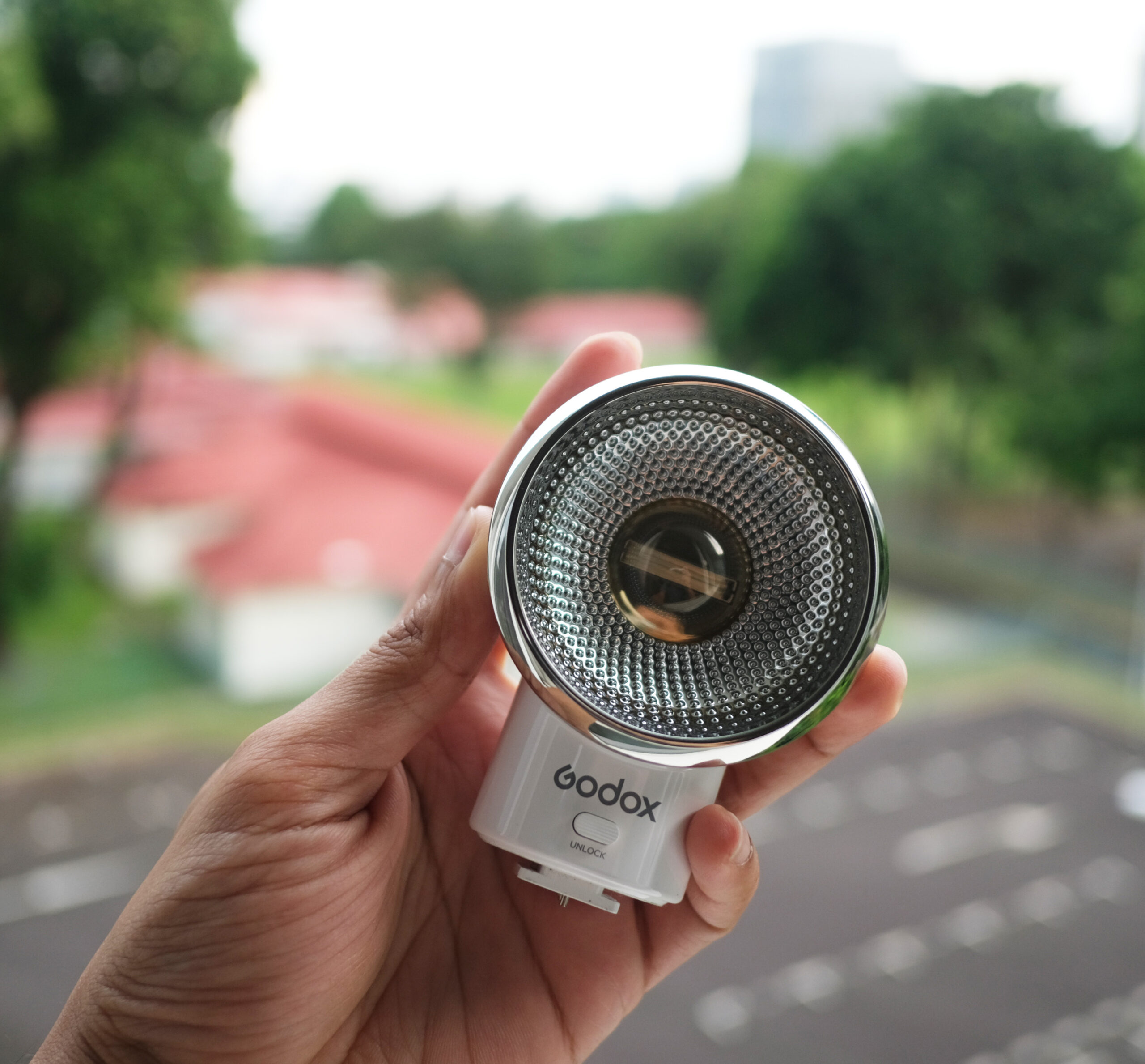
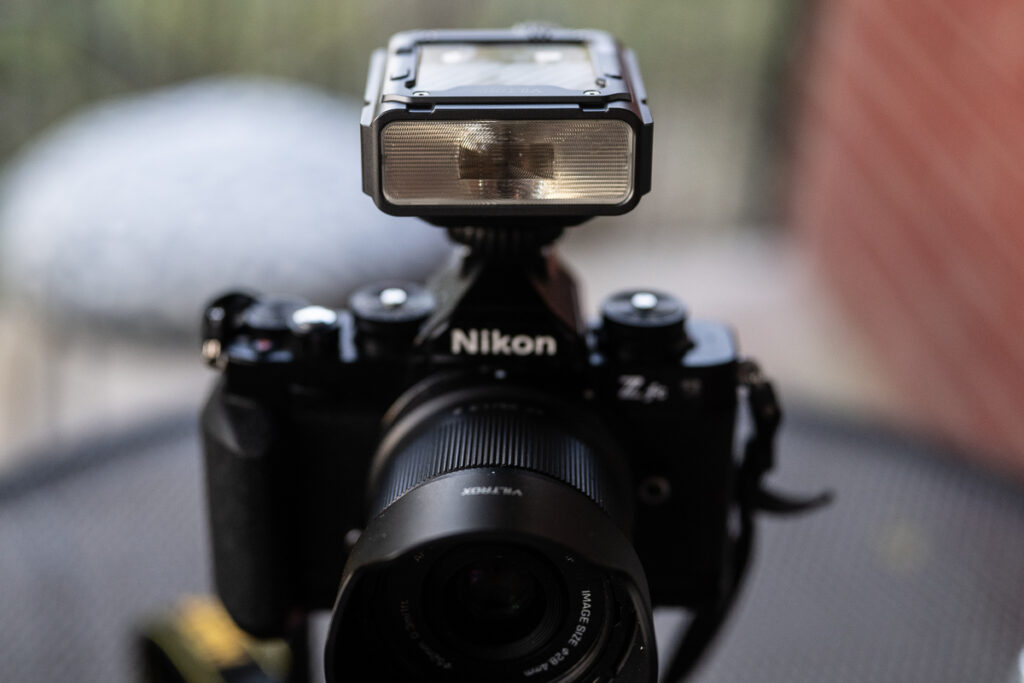
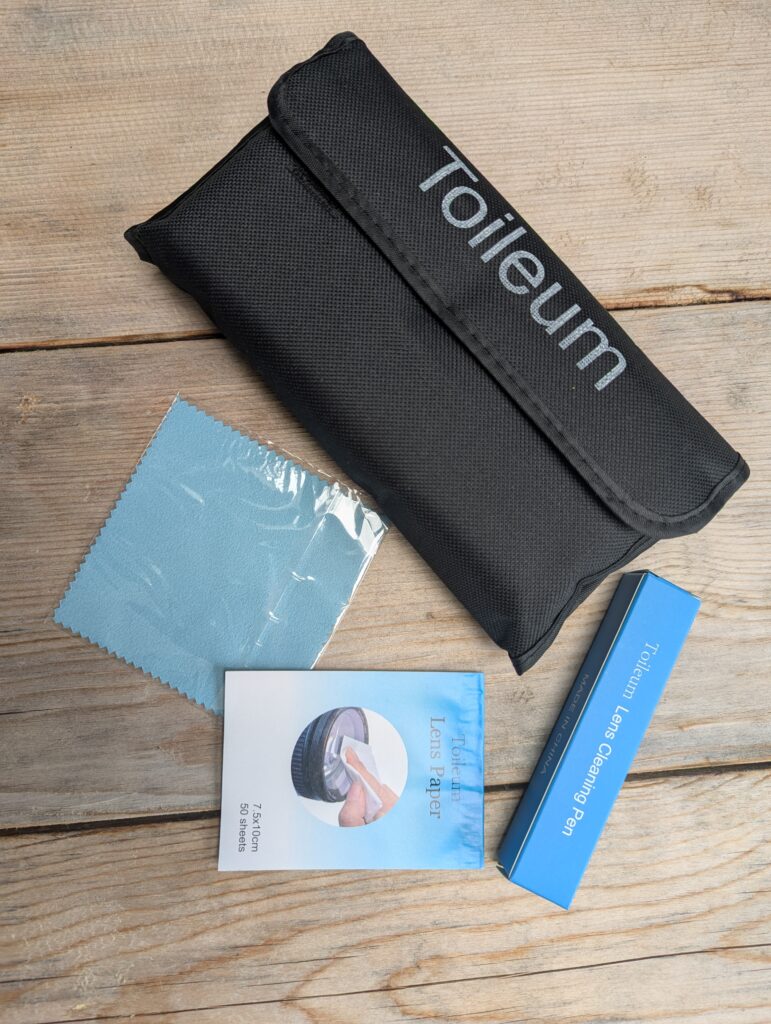
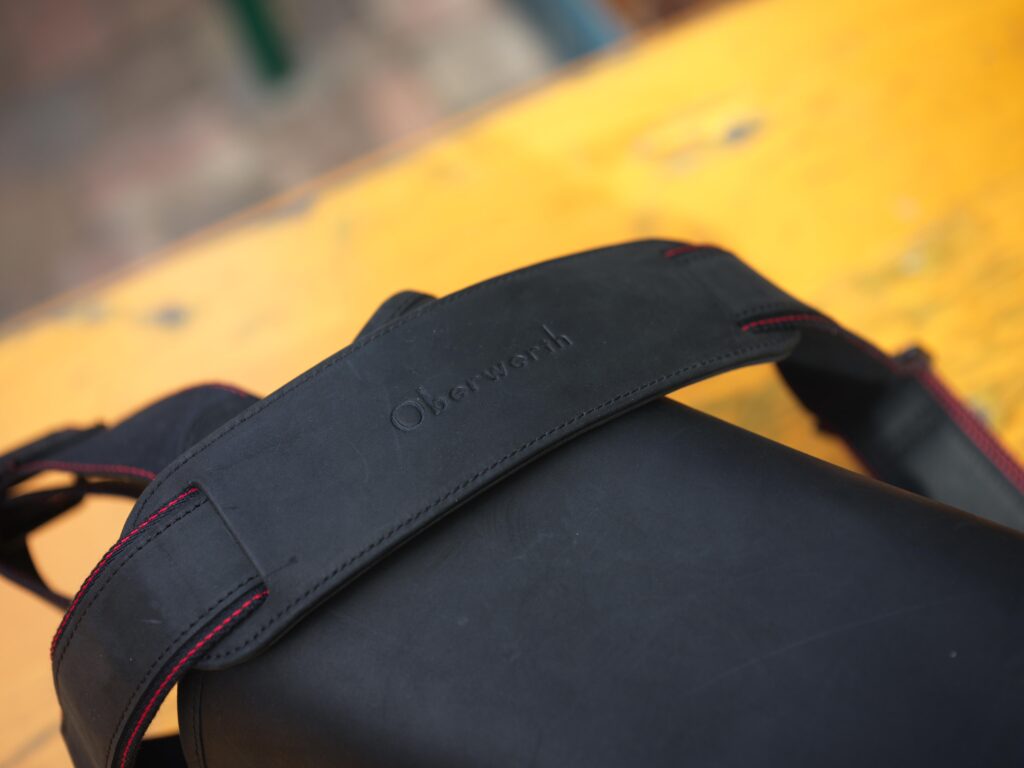
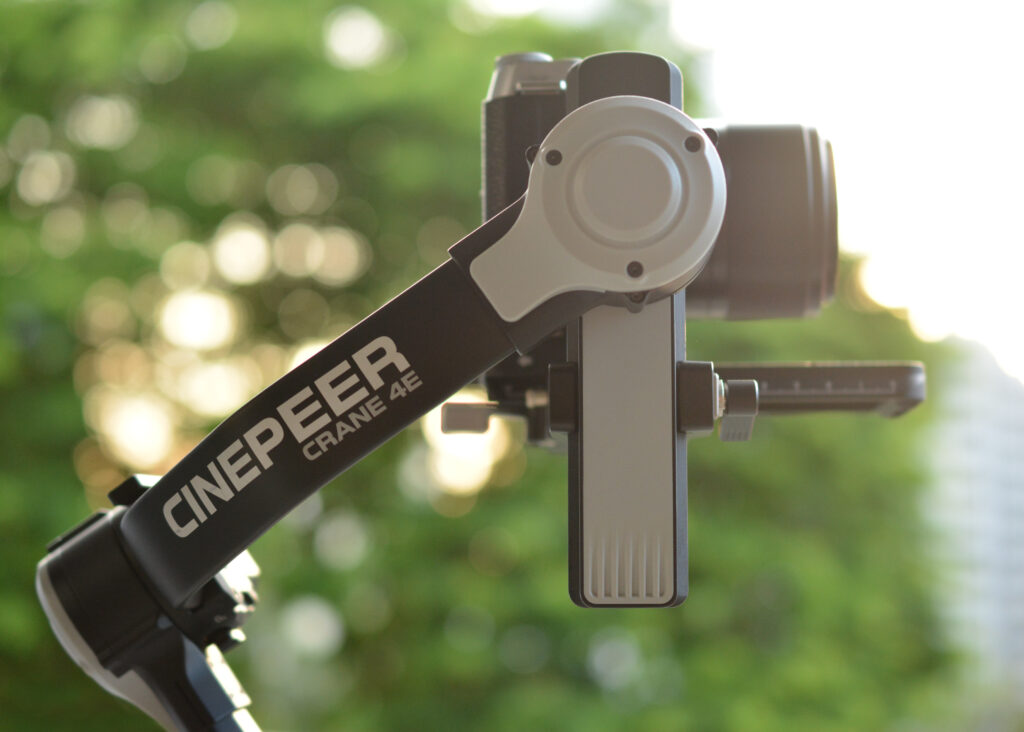




Comments
Andrew Fildes on Godox Lux Elf Review – the Cute New Retro Flash
Comment posted: 01/07/2024
In this case rather than having the convenience of just flipping a new couple of AA's or AAA's into the flash, the only solution I would have would be to carry a second flash unit! Frankly getting a bit fed up with the inconvenience of rechargeables. It's nonsense - I'll get the model with actual batteries..
Comment posted: 01/07/2024
Mark on Godox Lux Elf Review – the Cute New Retro Flash
Comment posted: 02/07/2024
So this does not control the flash level with a sensor at all?
I think I'll stick to my SB-24...
Thanks. Mark
Comment posted: 02/07/2024